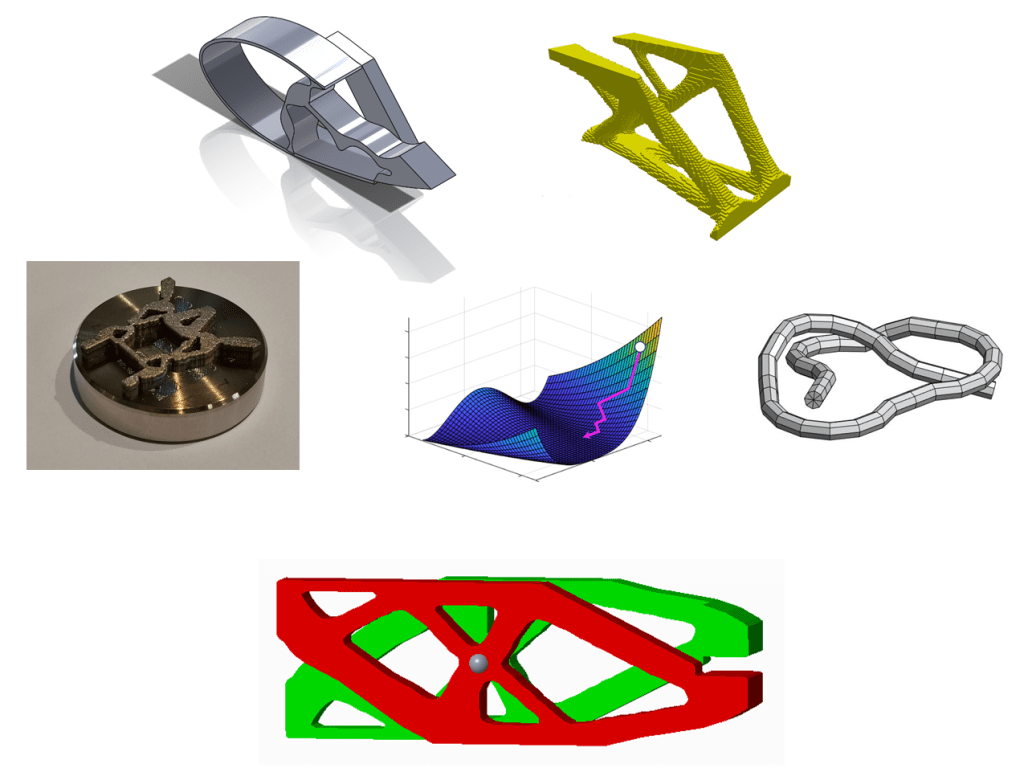The Design Innovation & Computational Engineering (DICE) Lab is dedicated to the creation of novel algorithms and computational tools for the design and synthesis of complex mechanical systems. By combining numerical optimization with simulation codes for modeling the nonlinear response of the mechanical systems, we are able to synthesize optimal designs for a wide variety of engineering problems. The current trend in engineering design is to create increasingly complex, adaptive, multi-functional systems. Computational design optimization is a critical tool for meeting this demand, as it leverages both human creativity and the computing power of machines to produce designs that satisfy progressively more ambitious performance requirements. Designing these highly specialized systems requires the development of complex nonlinear, yet computationally efficient algorithms and mathematical models, which makes this research area especially interesting and ripe for innovation.

Our guiding philosophy is that algorithmic design processes offer a level of mathematical rigor that can both augment and complement human creativity. Therefore, if we incorporate algorithms earlier and more deeply in the design process, we will ultimately enable the creation of better performing designs. At the DICE Lab we seek to create design algorithms that can be used to automatically generate entire design concepts, as well as to optimize conventional design configurations. We investigate the design of complex structures and mechanisms subject to various sources of nonlinearity including material damage, viscoelasticity, large deformations, and aeroelastic coupling. Below is a list of our various research thrusts…
- Structural topology optimization
- Multidisciplinary design optimization
- Automated computational synthesis of multi-body mechanisms
- Machine learning methods for design automation
- Design for additive manufacturing
- Computational design of aeroelastic structures
- Optimal design of adaptive morphing structures using active materials
- Design of resilient systems while accounting for material damage


